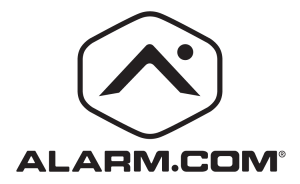For years, the cybersecurity conversation has been dominated by Intrusion Detection Systems (IDS), firewalls, and keeping the “bad guys” out. While essential, this focus only addresses half the problem. Today, smart businesses like yours are looking beyond the perimeter to address a threat that is often overlooked, yet potentially more damaging: the insider threat.
An insider threat isn’t always a disgruntled employee seeking to do harm. It can be a negligent contractor, a credential-stealing piece of malware, or a well-meaning employee who falls for a phishing scam. Regardless of the motive, the common denominator is that the threat originates from within your trusted network boundary.
Protecting your critical assets in this new landscape requires a defense strategy built on two foundational pillars: Robust Access Control and Continuous Monitoring.
Pillar 1: Robust Access Control (Prevention)
Access control is the first, strongest line of defense against insider risks. It’s the mechanism that ensures the right people have the right access, and nothing more. This concept is best enforced through the following strategies:
Embrace the Principle of Least Privilege (PoLP)
This is the golden rule of access management. PoLP dictates that a user should only have the minimum level of access and permissions required to perform their job duties—and nothing more.
- The Benefit: By limiting access, you limit the blast radius of a security incident. If a junior analyst’s account is compromised, the attacker can’t immediately pivot to your CEO’s financial records.
Implement Zero Trust Architecture
In a Zero Trust model, you stop assuming trust simply because a user is inside the corporate network. Every access attempt—whether by an employee, contractor, or partner—must be authenticated, authorized, and continuously validated. The mantra is simple: Never Trust, Always Verify.
Mandate Strong Authentication
Passwords alone are no longer enough. Multi-Factor Authentication (MFA), including biometrics, security keys, or time-based one-time passwords (TOTP), should be mandatory for accessing all sensitive systems. This single step makes it exponentially harder for an attacker to use stolen credentials.
Pillar 2: Continuous Monitoring (Detection & Response)
While robust access controls prevent misuse, continuous monitoring provides the necessary visibility to detect anomalies and respond rapidly when a security control is bypassed or an account is misused.
User & Entity Behavior Analytics (UEBA)
This advanced monitoring capability uses machine learning to establish a baseline of “normal” behavior for every user and device in your environment.
- Example: If a salesperson typically logs in from New York between 9 AM and 5 PM and suddenly tries to download the entire customer database at 3 AM from a server in a foreign country, the UEBA system will flag that activity immediately for investigation, even if the credentials used were valid.
Comprehensive Logging and Auditing
You can’t secure what you can’t see. Your systems must be configured to log and centralize all relevant security events. This includes:
- File access attempts (success and failure).
- User login and logoff times.
- Changes to user permissions.
- Data transfer volumes to external services (cloud storage, personal email).
These logs are essential for auditing, forensic analysis after an incident, and proving regulatory compliance.
Real-Time Alerting and Automated Response
Monitoring is only effective if it drives action. Security teams need real-time alerts that are tuned to spot critical activities (like mass data deletion or privilege escalation). Furthermore, automated response tools can instantly disable a compromised account, isolate a suspicious endpoint, or revoke access to a critical system the moment a threat is detected—significantly reducing the time an insider threat has to cause damage.
Moving Forward with a Holistic Approach
Intrusion detection protects your front door from external threats. Access control and monitoring are the comprehensive internal security system that ensures accountability and rapid response when a risk is present inside the building.
At HS Tech Group, we understand that true security requires a shift in mindset—from believing you can keep all threats out, to controlling and scrutinizing every action taken within. By integrating a strong foundation, you not only protect your business from the known but also prepare it to withstand the unknown risks posed by the complex and constantly evolving insider threat landscape.






